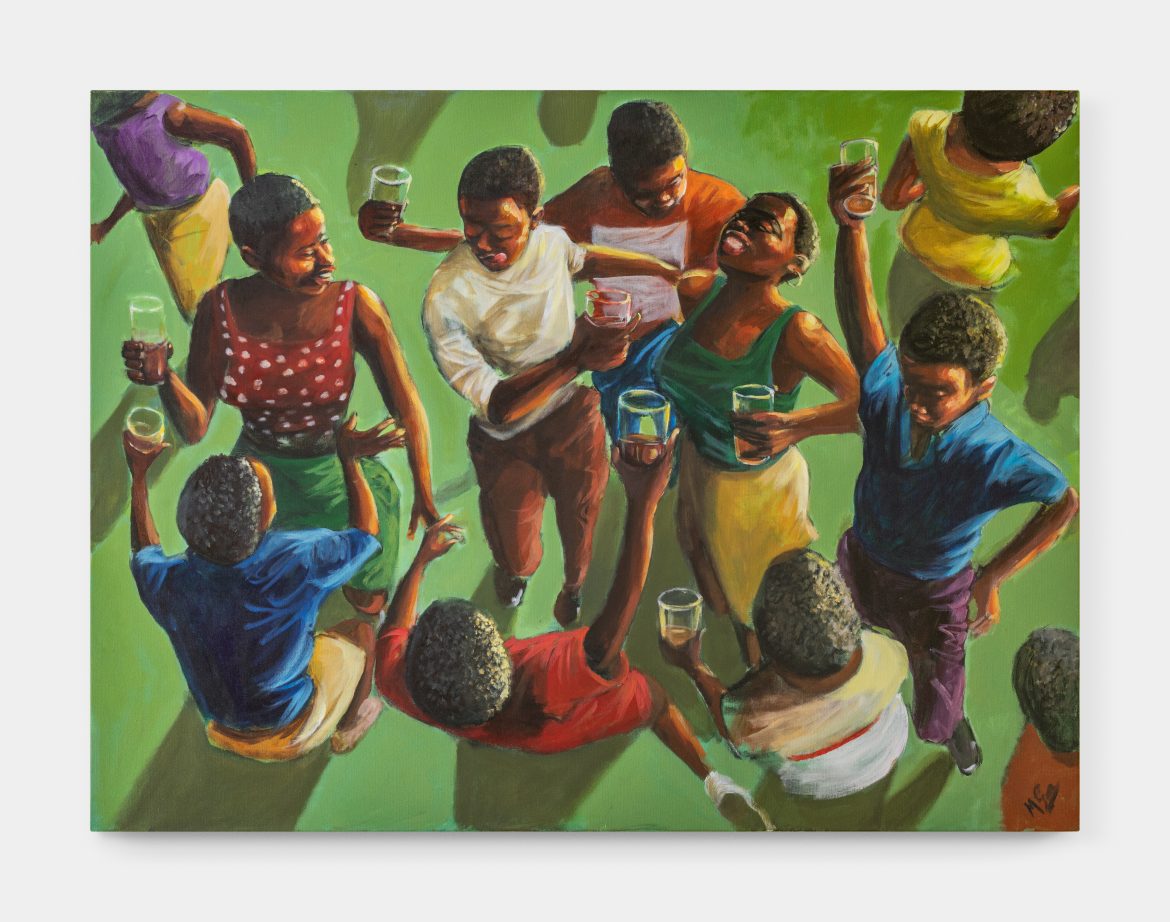Beyond being the biggest and best showcase of contemporary art from Africa, this year Investec Cape Town Art Fair runs from 16 – 18 February 2024 at the Cape Town International Convention Centre (CTICC), and offers visitors an especially rich array of special features, highlights and extras.
The theme for the 2024 edition of the fair is Unbound, aiming to break free from constrictive narratives and focus on emerging, diverse ‘unbound’ voices as a catalyst for the creation of new possibilities. More than ever, the Investec Cape Town Art Fair will celebrate the city of Cape Town, offering visitors a programme packed with opportunities to explore the artistic life of the Mother City and its cultural institutions.
Investec Cape Town Art Fair 2024 invites visitors to see how the Unbound theme is interpreted in 11 ways at the 11th edition of the largest contemporary art fair in Africa.
Fabulous first-time features will join the lineup of favourite talks, walkabouts, parties, tours and opportunities to explore the Mother City’s art ecosystem, including the Yawa Off White Capsule and Lukhanyo Mdingi collab, which is the first of its kind at the fair, the brand-new focus on ceramics and ‘GENERATIONS’, a debut section featuring cross-generational dialogues between artists.
For the first time, five emerging artists selected from twenty artists who have been through the City of Cape Town’s Emerging Artists Programme will be represented by a dedicated booth curated by curator, Igsaan Martin. Additionally, Bo Kaap is set to bind the city with an activation that speaks to the Unbound theme.
Here are 11 things that you can’t miss at Investec’s Cape Town Art Fair:
1. Fired up
This year, for the first time, the Investec Cape Town Art Fair will present a special project on one of the most exciting artistic mediums emerging as a major force in contemporary artistic expression. Titled ‘Cabinet|Clay’, this project brings together a selection of ceramic works that showcase artists working in clay.
From the refined work of master ceramicists such as Ian Garrett to those who embrace its potential to express contemporary feminist concerns, such as Frances Goodman, others who explore current evolutions of local heritage and traditional techniques, such as Madoda Fani, Chuma Maweni and Clive Sithole, and yet others, like architect Michal Korycki, who engage with clay’s materiality and inherent ability to express form and construction, ‘Cabinet|Clay’ explores the modern embrace of this ancient medium.
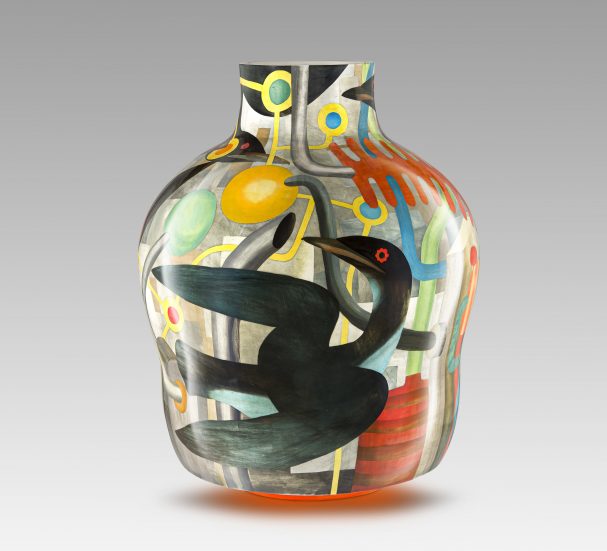
EBONY CURATED, John Newdigate, Birds in a Sub-Station, 2022 Hand Painted, Glazed Ceramic
Other artists include Amogelang Maepa, John Newdigate, Lisa Ringwood, Siyabonga Fani, Githan Coopoo, Jeanne Hoffman, King Houndekpinkou, Chuma Maweni, Louise Gelderblom and Geena Wilkinson.
2. A new GENERATION
Making its debut at this year’s fair, ‘Generation’ sets artists from different generations in dialogue with each other to create intergenerational conversations and engender a deeper understanding of both emerging and established voices. By setting off interactions between a selection of 10 artists at different stages of their careers, this section aims to bring to light new insights into both evolving concerns that span generations as well as the jumps and discontinuities, intersections and departures.
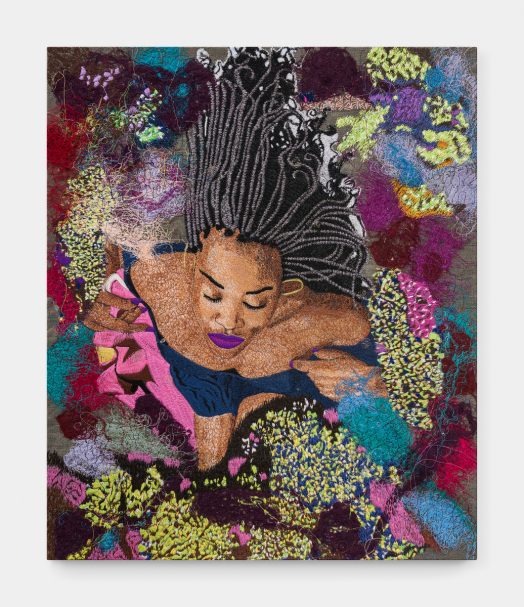
EBONY CURATED, Kimathi Mafafo, Emerging Into Self III, 2023 Hand and Machin.jpeg
Curators Natasha Becker and Amogelang Maledu hope such conversations will catalyse a more meaningful cultural relationship between past and present. Participating artists include Esther Mahlangu (The Melrose Gallery) in conversation with Bonolo Kavula (SMAC Gallery), artists from Rorke’s Drift (Riaan Bolt Antiques) in conversation with Terence Maluleke (Southern Guild), Lulu Mhlana (Jonathan Carver Moore) in conversation with Sedireng Mothibatsela (Ora Loapi), Barry Salzman in conversation with Emme Pretorius (both IS Art Gallery), Kimathi Mafafo (EBONY/CURATED) in conversation with Ayobami Ogungbe (Rele Gallery).
2. What’s the ALTernative?
The popular ALT section, which made its debut in 2022, has been expanded this year. This fascinating section is dedicated to projects that reflect the “anti-booth”: the many ways in which newly established and non-traditional art project spaces have emerged as the art world has been forced to adapt to circumstance and invent ways that depart from conventional and traditional models.
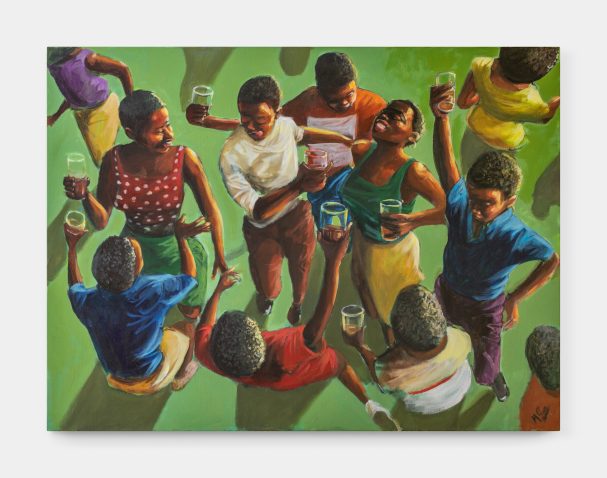
16 on Lerotholi, Mongezi Gum, ‘Midnight Melodies
ALT represents manifestations of emergent thinking and modes of practice that have broken away from the existing arts ecosystem to reveal the diverse, innovative and alternative artistic universe that exists in and around the continent. There are fourteen exhibitors, which include the likes of 16 Lerotholi, Art Formes, artHARARE, Borna Soglo Gallery, Vela Projects and Untitled, who make up the lineup for ALT section.
3. Off the WALL
This year, WALL will explore one of the hottest and most fascinating areas of recent local art history: the development of South African modernism. WALL will present an overview of work from the 1940s to the recent past that disrupted traditional modes, challenged the art market and forged the foundations of contemporary art production.
This year’s presentation begins by exploring early shifts in the palettes of the works of the likes of Gregoire Boonzaier, George Pemba and Gerard Sekoto and progresses to a more radical rethinking of representational modes in the abstract work of Cecil Skotnes, Ezrom Legae, Lucas Sithole and Edoardo Villa. It traces the early ‘scapes’ of Kenneth Bakker through to the mystical icons of Larry Scully, Douglas Portway and Kevin Atkinson and the ‘hidden universe’ made visible by Karel Nel and culminates in the woven ‘spiritualist’ statements of Igshaan Adams.
The exhibition also weaves in the narrative approaches in a selection of works by Sam Nhelengethwa, Willie Bester, Peter Clarke, Cecil Skotnes, Robert Hodgins, Sydney Kumalo and Mary Sibanda, another key component of South Africa’s artistic heritage.
5. Global gathering
After more than a decade, the Investec Cape Town Art Fair has the unique ability to bring together artists from around the globe in a single space. Works from prominent artists from 50 countries around the world are represented by galleries far beyond the traditional art centres, co-mingling and interacting on an equal footing with those from Europe and the USA. This grand gathering offers art enthusiasts an unparalleled opportunity to appreciate emerging trends and gain insight into the forces shaping cutting-edge collections.
The global gathering of artists from around the world includes – from A to Z – the likes of Romina Ressia (Argentina), Pieter Vermeersch (Belgium), Alfredo Jaar (Chile), Cinthia Sifa Mulanga (DRC ), Ibrahim Khatab (Egypt), James Mishio (Ghana), Manjot Kaur, (India), Daniele Sigalot (Italy), Carl-Edouard Keïtai (Ivory Coast), Maria Sosa Ruiz (RojoNegro) (Mexico), Ikeorah Chisom Chi-FADA (Nigeria), Dan Perjovschi (Romania), Robert Gabris (Slovakia), William Kentridge, Igshaan Adams, Maria Lai, Sam Nhlengethwa (South Africa), Marc Herrero (Spain), Ardan Özmenoğlu (Turkey), Daniel Atenyi (Uganda), Gabe BC (USA), Yinka Shonibare (UK) and Helen Teede (Zimbabwe). Such diverse influences make for an incredible viewing of contemporary art.
![Goodman Gallery, Yinka Shonibare [British], Bee Keeper Boy II](https://www.womanandhomemagazine.co.za/wp-content/uploads/2024/02/12.-Goodman-Gallery-Yinka-Shonibare-British-Bee-Keeper-Boy-II-3-455x607.jpg)
Goodman Gallery, Yinka Shonibare [British], Bee Keeper Boy II
The meaningful, unconventional and original ways in which artists from Africa and the diaspora harness the expressive power of materials in contemporary art practice is nothing short of breathtaking, opening avenues of expression that can be difficult to categorise.
Fabric and textiles, as in the work of Zanoxolo Sylvester Mqeku and Sizwe Sama Sibisi, have become an important and widespread medium, as have various craft-based techniques such as Pierre Fouché’s lacework, and in others, wire sculpture and Zenaéca Singh, who works with molasses, sugar paste, panes of crystallised sugar and resin.
The use of found and discarded materials is multifaceted. Nicholas Hlobo and Tesprit’s use of sculpted rubber, is just one particularly powerful example. Chris Soal’s use of mundane objects such as toothpicks and bottle caps has the most unexpected results, and Usha Seejarim’s reinterpretations of ordinary and domestic objects such as safety pins, wooden pegs, irons and brooms are among the better-known artists using assemblage as a way of incorporating found objects into artworks. Laetitia Ky’s use of hair, for example, has become the basis of a unique methodology.
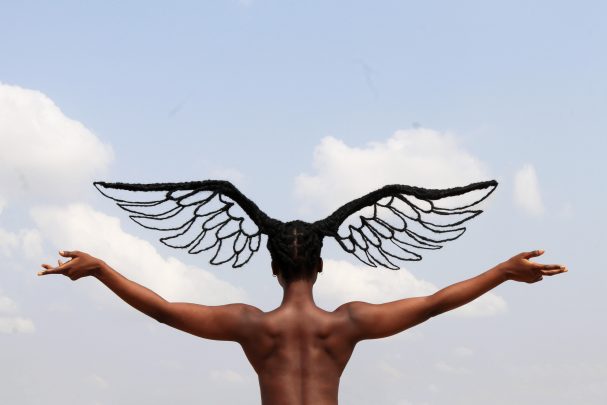
LIS10 Gallery, Laetitia Ky, “Free“ c-print, mounting on diasec-plexiglass satin
7. Fashion Forward + Retail Therapy
In addition to the opportunity to purchase art, this year’s Investec Cape Town Art Fair offers a wider-than-ever range of other items for purchase, from fashion to merchandise. Excitingly, fashion platform Yawa (owned by DJs Black Coffee and Euphonik with fashion entrepreneur Arie Fabian) will be showing their collaboration with fashion designer Lukhanyo Mdingi (LVMH prize alumnus and recent winner of the Amiri prize), a set of retro LM x YAWA co-branded graphic logos and colourways, that are derived from 1970/80s music equipment logotypes and record company logos.
Yawa will also be showcasing a special “OFF-WHITE™️ LOGIC” capsule collection, an Off-White exclusive project to celebrate the 10th anniversary of the brand, which was established by the late fashion designer Virgil Abloh. In addition, Yawa is launching a limited edition drop of 50 Off White ‘Cape Town’ T-Shirts called the OFF WHITE CITIES T-SHIRT SPECIAL PROJECT. The fair’s organisers have produced a selection of notebooks, chocolates, T-shirts and totes available for those seeking Investec Cape Town Art Fair memorabilia.
The fair has also collaborated with various local designers on an ‘Exclusives’ range, which includes candles, espresso and cappuccino cups. Granadilla Swimwear has produced an exclusive artist range of swim shorts, especially for the fair, too. A curated range of jewellery by Pichulik will also be available. Beyond this dedicated retail section, the fair will also have a range of art magazines, journals and publications available for visitors to purchase.
8. Through the lens
The medium of photography has assumed a hugely significant role in the rise of contemporary art from Africa, enabling the representation of new perspectives, being harnessed in the exploration of place, history and identity, and being used by artists to develop new aesthetics. It remains a medium through which artists find seemingly unending possibilities, from conventional photography through video work and digital manipulation. The fair includes a broad range of works throughout its sections, ranging from historic documentary work by the likes of the legendary Jürgen Schadeberg to contemporary masters of the medium such as Andrew Tshabangu, Guy Tillim, Jo Ractliff and Daniel Naudé. These established photographers are complemented by the most exciting newcomers like 21-year-old Sarfo Emmanuel Annor of Koforidua, Ghana, who uses his smartphone to revive the art of portraiture.
The likes of Sabelo Mlangeni and Jabulani Dhlamini (and his protege Thembinkosi Hlatshwayo) keep the documentary tradition alive and well, while photography as a medium continues to spill over in other experimental media, as is the work of LegakwanaLeo Makgekgenene. Many renowned multimedia artists include elements of photography in their work, not least images of the artists themselves in various guises by the likes of Mary Sibande, Thania Petersen and Nandipha Mnthambo. Ugandan photographer Ethel Aanyu does something similar. And everywhere, photography and video art combined with performance, assemblage and other multimedia forms. The ongoing innovation through the medium of photography in contemporary art from Africa and the diaspora remains hugely significant and a burgeoning field of invention.
9. Cultural connections
Investec Cape Town Art Fair not only brings together galleries and artists but also a wide range of the city’s other cultural institutions. Large foundations with private collections such as the Norval Foundation, Zeitz MOCAA, Irma Stern and the A4 Arts Foundation all play a significant role in the cultural and social life of the region, sustaining the artistic ecosystem, education and broader artistic and cultural economy as much as public museums and institutions such as Iziko Museums do. Through research, public exhibitions, publications and educational programmes – as well as the custodianship and preservation of collections – these organisations contribute enormously to the enrichment of the region’s cultural life.
Educational projects like the Lalela Project, which will also participate in the fair, collaborate with contemporary artists in an innovative after-school arts education programme to bring positive social change to at-risk youth. Visitors to the fair will have an opportunity to gain insight into and understanding of the non-commercial arts activities that sustain contemporary arts production and establish the cultural climate that catalyses artistic innovation, not to mention fostering cross-cultural understanding in the region.
10. Bo-Kaap and beyond
Among the events, a public art and urban intervention has been planned for the historic inner-city area of the Bo-Kaap, giving visitors a taste of how Cape Town has established itself as one of the most attractive and interesting art destinations in the world. In Bo-Kaap, two pop-up exhibitions hosted by international galleries, Galerie EIGEN + ART, will run for the duration of the Fair, from 10th to 18th February and Suburbia Contemporary, will run from 10th to 15th February. All participating Cape Town galleries will also be open with exciting exhibitions, tours and picnics taking place throughout the city. The Bo Kaap Museum will host a performance piece by Thania Petersen, accompanied by local dancers and musicians in a reimagining piece about the Cape’s history and the stories of its people.
11. Talks and walks
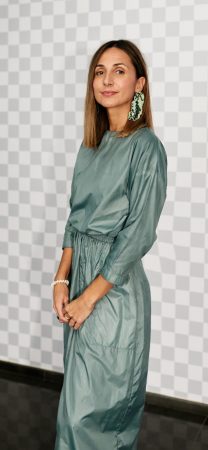
Curator, Tomorrows Today – Dr Mariella Franzoni
One of the major drawcards of the Investec Cape Town Art Fair has always been its programme of talks, dialogues, conversations, debates, discussions and presentations by artists, curators, gallerists, academics, writers and collectors. A daily programme of guided walkabouts will again be on offer this year – a perfect opportunity for first-time visitors to orient themselves, gain an overview of the offerings at the fair and establish an understanding of the artists and artworks on view. The full programme of talks and the schedule of walkabouts is available on the website.
The Walkabouts Programme, curated by Art School Africa, will feature walkabouts by Dr Mariella Franzoni (curator of Tomorrows/ Today), Sean O’Toole (curator of SOLO), Phokeng Setai and Alex Richards (co-founders of Exhibition Match), Natasha Becker and Amogelang Maledu (co-curators of the new GENERATIONS section), Alice Toich (Artist), Max Melvill (Creative), Karabo Morule (Entrepreneur) and Andrew Lamprecht (Curator).
The Investec Cape Town Art Fair details:
● The eleventh Investec Cape Town Art Fair will run from 16 to 18 February 2024 at the Cape Town International Convention Centre (CTICC) from 11h00 to 19h00.
● Tickets can be purchased via the Webtickets link on www.investeccapetownartfair.co.za
ALSO SEE:
Zeitz MOCAA collaborates with SA artist Athi-Patra Ruga for its annual gala
Featured image: 16 on Lerotholi, Mongezi Gum, ‘Midnight Melodies’ / Supplied

